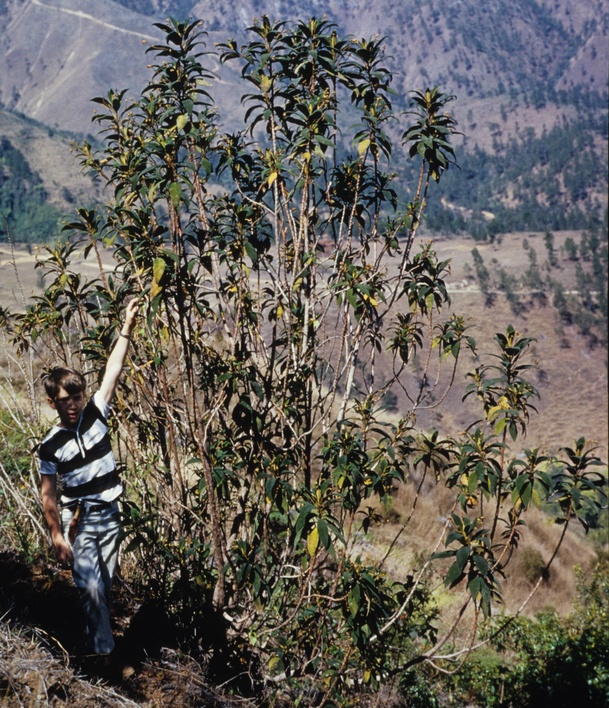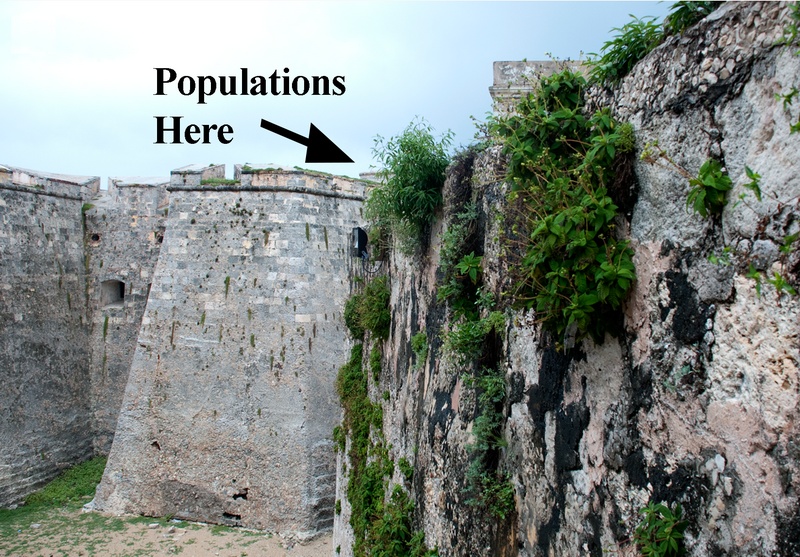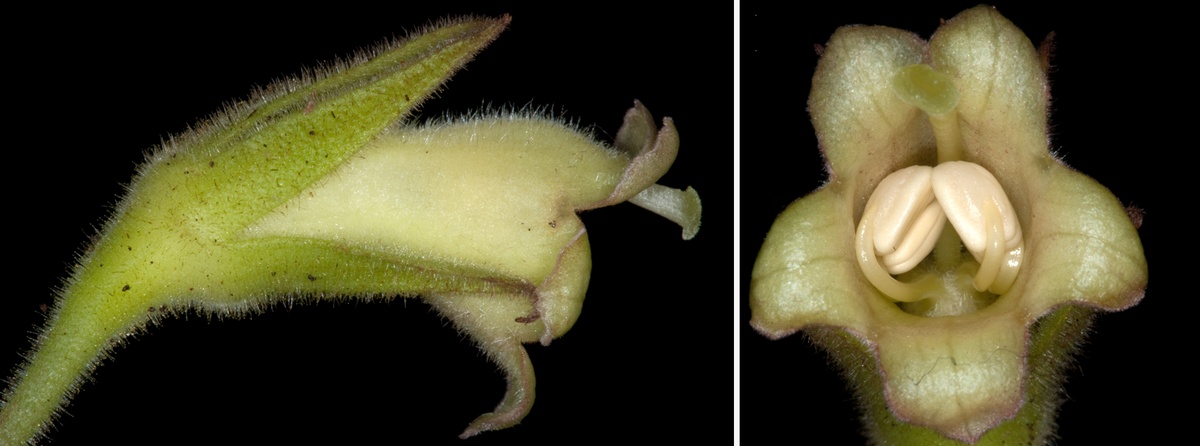One useful feature for recognizing Rhytidophyllum is that abundant populations often grow in full sunlight along secondary roads. It is relatively easy to observe Rhytidophyllum on a fast-moving bus where clumps of populations of 30-50 individuals are common. The stems are stout and erect and can be more than two meters tall. The leaves are covered with viscous (sticky) hairs.

Lithophytic (rock dwelling) Rhytidophyllum species represent a habit that is different from the more common terrestrial shrubs. Rock dwellers are smaller (ca., less than 60 cm tall) than their terrestrial relatives. One of my favorite rock-dwellers and most readily observed species is Rhytidophyllum crenulatum that covers the walls of the Morro Castle near the entrance to Havana bay in Havana, Cuba.

The flowers of Rhytidophyllum are mostly campanulate (bell-shaped) with tubes that are greenish-yellow or yellow suffused with purple splotches. Unlike the ephemeral flowers of many Gesneria, the flowers of Rhytidophyllum are usually persistent and easily observed above tufts of terminally clustered leaves. A selection of Rhytidophyllum flowers is featured below.



